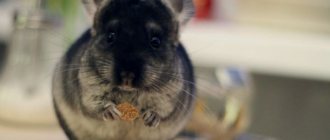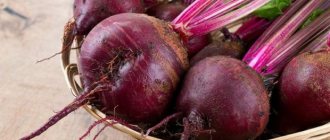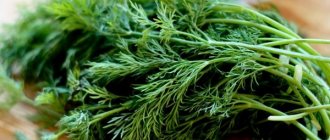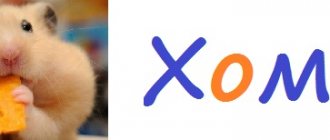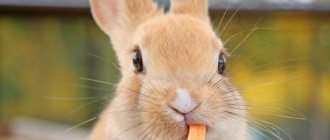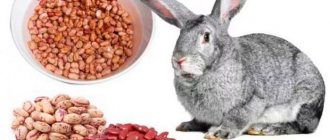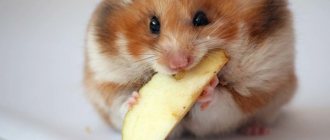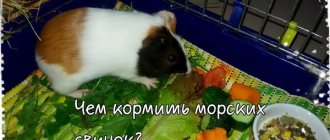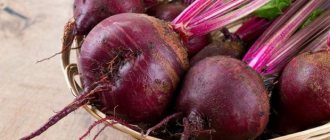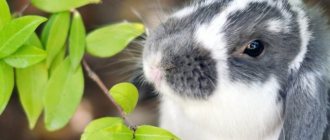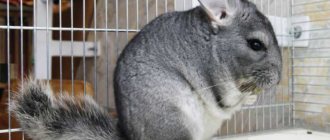Chinchilla content: permitted and prohibited products
Chinchillas are kept on ready-made pelleted food, but also on grass and grains. Therefore, it is worth noting which products are included in the green sector.
- The following greens would be suitable: salad
- spinach and sorrel
- plantain
- calendula
- coltsfoot
- chicory
- parsley
- jasmine
- blooming Sally
- nettle
- alfalfa
- clover
- mint
- thyme
- chamomile
- Melissa
- goat's rue
- series
- echinacea
- dandelion
- yarrow
- calamus and burdock root
- from the apple tree
- Legumes are extremely healthy and loved, especially: lentils
- white and red beans
- beans
- peas
- soybeans
Food should be varied
- Don't forget about grain crops: wheat
- corn
- and also buckwheat
- rice
- millet
- oats
- and barley
- Vegetables worth noting: carrots
- pumpkin
- young corn
- Bell pepper
- kohlrabi
- zucchini
- zucchini
- squash
- Jerusalem artichoke
For a treat
- As for fruits, you should choose: apples
- pears (in moderation)
- bananas
- figs
- strawberries
- lingonberries
- rosehip
How to choose hay for a chinchilla
Red sector or what not to give to chinchillas:
- Fresh fruits and vegetables
- Nuts and seeds in large quantities. You should also be careful with almonds and pine nuts - they can be given no more than 1-2 times every 2 weeks!
- Herbs that are poisonous to chinchillas: fern
- horsetail
- buttercup
- rushnik
- black nightshade
- dope
- St. John's wort
- white hellebore
- cornflower
- raven eye
- acacia
A few words about the benefits of tea
A little about harmful things
Under no circumstances should you feed your chinchilla the following foods:
- meat;
- roasted grains;
- baking;
- starch - noodles, pasta, potatoes;
- fast food;
- mushrooms;
- eggs;
- confectionery, sweets, ice cream, sweets;
- fermented milk products;
- salad, cabbage.
It is better to please pregnant females with treats more often. This will contribute to excellent health, healthy children and tasty milk. Ideal additions to the main food and fresh herbs for them would be calendula, almonds, flax seeds, buckwheat, and dandelion. They not only help cope with problems during pregnancy, but also help restore the body after and give more benefits to milk.
Maintain the amount of tasty and healthy additives, keep in mind that today, for example, you can give an apple, and tomorrow rowan, and your animal will become a real long-liver, while receiving a variety of sweets every day.
Natural treats
The main treat for chinchillas is dried apples. They contain fiber, which promotes proper digestion. Remove toxic waste products and improve overall metabolism in the animal’s body. Like carrots, apples help strengthen fur and the cardiovascular system.
Dried carrots are perfect for constant pampering. It contains vitamins A, B, C, E, a large amount of iron, potassium, calcium. As you know, this is the main supplier of beneficial carotene to the body. Carrots are a natural teeth cleaner. Since it awakens the appetite, you don’t need to give it a lot at once - a pinch a day is enough. Sweet pepper in the same quantity is an excellent vitamin supplement that strengthens teeth, gums and immunity.
Raisins are given to strengthen the heart, as a cure for anemia and weakness. Chinchillas love it very much because raisins contain a lot of sugar. But you should not give more than 1 berry per week. Raspberries can be given fresh or dried, 2-3 berries per week (like hawthorn). It is rich in organic acids and salts of iron, potassium, and copper. Dried hawthorn is more of a medicine than a tasty treat. It helps to calm down, cope with stress, and is also indispensable for intestinal upset. The same amount of pumpkin seeds can be given to improve digestion, skin, and hair follicles.
Chokeberry is also rich in amino acids and rare vitamin P. Together with sweet pepper, they normalize the composition of vitamins and microelements in the chinchilla’s body. In addition to the listed delicacies, you can give nettles, oats, almonds, linden flowers, and fresh (not fried!) sunflower seeds. Chinchillas also love to sip green tea from time to time. It is rich in vitamins B1, B2, K, C, BB, and optimizes the nervous system. Green tea is a powerful antioxidant; it is better not to give more than a teaspoon per week.
Friends of Uglochikha
Now that you know everything you need to know about proper nutrition for chinchillas and about harmful foods , you can discuss healthy treats. You can collect it yourself and prepare wonderful supplies for your pet. He will be delighted!
Useful plants and fruits
ATTENTION! You should always remember that all fruits, berries and vegetables must be given only in dried form. Otherwise, digestive complications may occur.
We'll look at drying methods and recipes a little later. Let's start by focusing on the main useful products and their properties.
Kalina . Viburnum fruits are rich in vitamins K and P, organic acids, potassium salts, contain up to 32% sugars, tannins (about 3%), calcium, iron, phosphorus, magnesium, iodine. In terms of Vitamin C content and the amount of iron, provitamin A (carotene), and phosphorus, viburnum is far ahead of all citrus fruits. The fruits and leaves of viburnum contain potent phytoncides that have a detrimental effect on many microorganisms. Viburnum fruits have properties that improve digestion. It is used as a general tonic and has diuretic, choleretic, anti-inflammatory and wound-healing properties. You can give branches, leaves and fruits. Dosage: 2 times a week, 1 piece.
Corn . Corn grain contains important and necessary minerals: potassium, calcium, magnesium, iron, and phosphorus salts. It is rich in vitamins B1, B2, PP, calcium, magnesium, phosphorus and iron, as well as trace elements (copper and nickel). Dosage: 3-5 grains per day. Don't hang corn on the cob in your cage!
Carrot . Useful for chinchilla fur, strengthens the heart muscle, stimulates appetite. Phytoncides contained in carrots are a natural antimicrobial agent and help chinchillas cleanse the mouth and teeth of pathogenic environments. Carrots also help with anemia and dysbiosis in animals. Dosage: 1 cup 3 times a week.
Calamus roots . Contains essential oils and acorin glycoside, which, acting as a natural bitterness, affects taste buds, increases appetite and stimulates the production of juice in the stomach. Sabelnik helps get rid of flatulence, intestinal colic, thanks to its disinfectant effect, generally improves digestion, and enhances the secretion of bile. Sabelnik relieves convulsions, therefore it turns out to be indispensable for certain disorders of the nervous system. Due to the presence of terpenoids in calamus root, it is an antispasmodic. Dosage: 1 cm of root once a week.
Hibiscus (hibiscus, Chinese rose). Increases liver protection and removes unnecessary metabolic products from the body. High content of vitamin P. Hibiscus flower contains from 7.5 to 9.5% protein, which contains 13 amino acids, of which 6 are essential. They also contain polysaccharides, including pectin, which promote the release of toxins and heavy metals from the intestines. An excellent vitamin supplement for chinchillas’ diet, as it improves metabolism, tones and strengthens the body’s defenses, and increases resistance to infectious diseases. Dosage: 1 teaspoon 1 time per week.
Red clover . It is an antibiotic, anti-inflammatory, antiviral, antifungal, antimicrobial, antitumor agent. An amazing plant, it contains many biologically active substances: polysaccharides, alkaloids, glycosides, bioflavonoids, biotin, choline, trifolysin (an antifungal agent), salicylic, folic, coumaric acids, vitamins B, E, C, P, carotene, phosphorus, many microelements. Dosage: no more than 2 pieces once a week.
Plantain leaves . They represent a whole warehouse of vitamins (groups A, K and C). They are rich in tannins and polysaccharides. The medicinal properties of plantain in its anti-inflammatory, wound-healing, bactericidal, antispasmodic effects regulate the functioning of the gastrointestinal tract. Dosage: 1 medium-sized leaf 2 times a week.
Chicory . It is most often used as an astringent and antimicrobial agent. In addition, this plant is endowed with calming, anti-inflammatory, choleretic, diuretic, antipyretic, vasodilating, and hypnotic effects. It is also used to improve digestion and increase appetite. Chicory contains vitamins A, B, C, E, PP, proteins, fats, tannins, bitter and resinous substances, pectin, salts, choline, chicorine, essential oil, manganese, potassium, iron, sodium, phosphorus. Dosage: 1-2 flowers or stems 1-2 times a week.
Weeping willow . Willow leaves contain a record amount of vitamin C. In addition, the chemical composition of willow leaves is enriched with calcium, iron, as well as phosphorus and vitamin PP. Willow leaves contain in their chemical composition a significant amount of tannins, as well as flavonoids and salidroside. Naturally occurring compounds such as flavonoids are valued for their unique antiviral properties. Willow leaf is recommended for use as a natural medicine that helps maintain the immune system. In addition, willow leaves help in the treatment and prevention of diseases of the gastrointestinal tract. Dosage: 1 medium sprig once a week.
Rose hip . Multivitamin plant. Fruit pulp contains significant amounts of ascorbic acid, carotene, vitamins B1, B2, PP, K, pantothenic acid, flavonoids and phenolic acids. Rosehips, in addition to multivitamin properties, have choleretic, anti-inflammatory, regulating the activity of the gastrointestinal tract, as well as diuretic properties that are not accompanied by irritation of the kidney tissue, have a positive effect on the nervous system, and have a general strengthening, tonic effect. Dosage: 1 piece 1-2 times a week.
We have listed only a few. Among other things, you can give:
- Berries and fruits - blue honeysuckle, lingonberries, apple slices, hawthorn, strawberries, juniper, raspberries, sweet peppers, chokeberries, blueberries, rowan berries, barberries, blackberries, gooseberries, cranberries, currants.
- Plants - parsley, ginseng, chamomile, Jerusalem artichoke, alfalfa, fireweed, calendula, nettle (not for pregnant women), coltsfoot, sorrel, oregano, home rose.
- Trees - mulberry (branches and leaves only), aspen, linden, willow, ash, birch, pear, apple, elm, poplar, jasmine (flowers).
Rules for collecting and storing plants
Collecting plants requires special knowledge and skills from the harvester. Therefore, before starting this labor-intensive work, you need to familiarize yourself with plants, learn to distinguish them from similar low-value, harmful, and sometimes poisonous species. It is also very important to know which parts of plants contain substances useful to chinchillas, and in what phases of growth and development of herbs you can collect. Certain rules must be followed:
- You should not collect herbs in cities or near roads with heavy traffic.
- In order to restore the thickets, mint, nettles, etc. should not be pulled out by their roots.
- When collecting flowers, leaves, raspberries, currants, hawthorn, rose hips, viburnum and other plants, do not break branches.
- Buds and bark from trees and shrubs should be cut only from the side branches and not touching the main trunk.
- When harvesting herbs, you should leave some of the plants without cutting everything off. When harvesting leaves of currants, lingonberries, raspberries, blueberries, birches and other plants, you need to leave some of them on the plant.
- When harvesting roots or tubers per 1 m2 of thickets, no more than 50% of the raw materials are collected. Re-harvesting is carried out only after a few years.
Failure to comply with these conditions when procuring raw materials leads to depletion and even complete destruction of plant thickets.
The bark is harvested only from young and healthy trunks and branches, in the spring during sap flow. At this time, the bark is easily separated from the wood. With a sharp knife, after clearing them of lichens, make circular cuts on young branches at a distance of 25-30 cm from one another, connect them with longitudinal cuts and remove the bark in the form of grooves or tubes.
The leaves are usually collected during the flowering period, with the exception of: leaves of the coltsfoot, in which they appear after flowering. Lingonberry leaves are collected both in the spring before flowering and in the fall; collected at other times, they quickly turn black and become unusable. Leaves are harvested only in dry weather, preferably in the morning, after the dew has dried. Developed basal, lower and middle stem leaves are picked off by hand, with or without a petiole. Leaves should only be fresh. Succulent leaves often self-warm. Therefore, they are not compacted, but rather delivered as quickly as possible to the drying place, where they are cleaned of foreign impurities.
Flowers and inflorescences are harvested at the beginning of flowering, both in inflorescences (linden, coltsfoot, chamomile, calendula), and individual parts of the flower (rose petals) or individual flowers. Flowers are collected by hand, carefully (do not crush, protect from the sun), before drying they are freed from impurities and other parts of the plant - leaves, peduncles, fruits, branches, etc. Fully blossomed flowers (but not fading ones) are harvested, without signs of wilting. During this period, flowers contain more active substances, crumble less during storage, withstand drying better and retain their color. Delivery of flowers to the drying place is carried out very quickly in bulk - loosely, in a rigid container.
The fruits are harvested during full ripening, since during this period they contain the greatest amount of active substances. They are collected by hand without any impurities from the stalks and other parts. It is better to pick juicy berries (blueberries, strawberries, raspberries, viburnum, sea buckthorn, rose hips, hawthorn) in the early morning or evening, since they quickly spoil when picked during the day in the heat. They are placed in baskets in a layer of 3-5 cm, each layer layered with grass or twigs. Under these conditions, the fruits are not squeezed or stick together into a lump. Before drying, you need to remove all impurities, as well as soft, spoiled, unripe and contaminated berries.
Roots are usually collected during the period of death of the above-ground parts in autumn or early spring, when the plant is in a dormant period. Roots, rhizomes and bulbs are dug up with shovels or pitchforks, sometimes pulled out of loose soil with a rake or picked out by hand. Then they shake off the soil, cut off the above-ground parts, thin roots, dead and damaged areas; washed in cold running water, laid out on paper and stirred often.
Drying methods . The collections must be dried immediately, spread out in a thin layer, so that they do not lose their beneficial properties and do not deteriorate. You can do this outdoors on a warm sunny day, in the oven for about 20 minutes at a temperature of 180-200° (not the best way) or in an electric dryer (several hours). It is very convenient to produce workpieces in a special dryer, since the racks are stacked on top of each other and are well ventilated, preserving the benefits of the products. It is necessary to carefully check the final products so that they are well dried, otherwise they will be damaged. Store in bags or paper bags in a dark and warm place. The shelf life of the finished product does not exceed 2 years.
DIY treats for chinchillas
Contraindications and harm
Among the most common contraindications to the use of seeds, various allergic reactions and inadequate immediate reactions are in first place.
If you suddenly see that after eating seeds, your rabbit has foam at the mouth, it becomes difficult for him to breathe (he coughs, starts sneezing, wheezing, etc.) or massive swelling appears on his body - then know that he seeds are contraindicated.
In general, it is quite difficult to identify general groups of contraindications for all types of seeds. For example, a contraindication to consuming sunflower seeds is animal obesity, while for pumpkin seeds this is, on the contrary, an indication.
Sunflower should also not be eaten by rabbits whose age has passed 5–7 years, who have atherosclerosis or have/had high cholesterol levels.
Pumpkin kernels are not recommended to be given to rabbits that have digestive disorders, have recently suffered acute infectious diseases, or during the period of a full-blown clinical picture of any disease.
Pumpkin seeds should also not be eaten by those furry animals that have problems with the functioning of their senses: hearing, vision and smell, as this can negatively affect them.
Important! If any of the symptoms listed in this section appear, we recommend that you immediately seek help from a professional veterinarian. Among other possible harms from eating seeds, you should also expect the development of: appendicitis, irritable bowel syndrome, diarrhea (roasted sunflower), constipation (pumpkin), vomiting, various changes in the lipid spectrum of the blood, obesity (sunflower), loss of hair and claws, and the appearance of irritation on the skin
Dried fruits for chinchillas
from
Mikhail Konovalov 05/19/2019, 23:59
1.9k Views
Chinchillas are members of the rodent family, but unlike many species of these animals, they are not omnivores. Keeping a pet chinchilla is not an easy task, and its conditions are very different from those of guinea pigs, hamsters, rats and rabbits. It's no secret that many decorative rodents love to eat sweets, as well as leftovers from the master's table. However, in the case of chinchillas, such nutrition can cause many diseases, and even death.
Foods that can be given in limited quantities
The list of products that chinchillas are fed at home includes some that can be given to the animals in small quantities.
- Nuts, sunflower seeds, peas, lentils, corn are highly nutritious food, rich in protein and fat. If the rodent is overfed with these foods, it becomes fat and its digestion may be impaired.
- Juicy greens (lettuce, dandelion) and vegetables (cucumbers, zucchini) are loved by animals, but these foods weaken them. Each day, one animal is given half a leaf of lettuce or one slice of cucumber 3–4 mm thick.
- Sweet fruits and berries are a favorite food for chinchillas, but in large quantities they can lead to metabolic failure.
- It is advisable to give branches of plants such as raspberry, willow, oak, alder and birch no more than once a week.
Each product new to the animal is given in the smallest dose, observing the pet’s behavior. If there is no deterioration in health within 24 hours after the introduction of the food, the product can be offered in an increased volume.
What does a chinchilla like to eat?
In the wild, chinchillas mainly feed on plant foods: cereals, legumes, shoots of bushes, trees and bark. Even cacti, moss and fruits are used. Very rarely, an animal can catch and eat an insect.
At the same time, feeding a chinchilla at home is not difficult: a complete diet can be made up of products that are easy to find in our latitudes. It usually includes grains, grass, dried vegetables and fruits, seeds and nuts. To meet the body's needs, the pet is also given special supplements and healthy treats.
The chinchilla is an energetic animal, and a lot of nutrients are wasted on its thick coat. Despite this, rodents eat little and are picky. Therefore, food should be given in small portions, but only high-quality food should be chosen.
The daily amount of food is 20-30 g, but you will have to adapt to each pet. If he eats all the food, you can give him a little more. But if the animal leaves or scatters food, this means that the portion must be reduced.
It is recommended to feed a chinchilla once a day in the evening, since it is awake in the dark. Thus, the body gets used to the regime, and food is digested more easily.
What you can and cannot feed your chinchilla
Inexperienced chinchilla breeders often make stupid mistakes when treating their favorite animals with pine nuts, chips or tangerines. As a result, completely hairless animals with severe allergies are brought to veterinarians; sometimes errors in nutrition cause the death of the pet. Chinchillas can be given pelleted food, hay and water. All other products must be strictly dosed. We recommend that you familiarize yourself with the list of products that can or cannot be used to feed your little friend.
Table of permitted and prohibited products
| Product | Possible in small quantities | It is forbidden |
| Grain and cereals | corn | rye |
| soybeans | ||
| rice | ||
| buckwheat | ||
| millet | ||
| oats | ||
| wheat | ||
| barley | ||
| beans | ||
| beans | ||
| peas | ||
| Greens and leaves | dandelion | raven eye |
| horse sorrel | poisonous buttercup | |
| plantain | dope | |
| nettle | white hellebore | |
| clover | lily of the valley | |
| Potentilla anseri | spurge | |
| alfalfa | digitalis | |
| burdock | marigold | |
| parsley | fern | |
| salad | Highlander | |
| spinach | field mustard | |
| raspberry leaves | larkspur | |
| strawberry leaves | marsh marigold | |
| yarrow | lumbago | |
| strawberry leaves | spotted hemlock | |
| chicory | carrot tops | |
| Branches | birch | apricot |
| oak | white acacia | |
| willow | beech | |
| aspen | elder | |
| juniper | cherry | |
| pine | cypress | |
| pear | plum | |
| Apple tree | maple | |
| sea buckthorn | chestnut | |
| Fruits, vegetables and berries | bananas | beet |
| apples | persimmon | |
| pears | fresh cabbage | |
| figs | fresh potatoes | |
| pumpkin | orange | |
| tomatoes | mandarin | |
| squash | ||
| prunes | ||
| dried apricots | ||
| raisin | ||
| strawberries | ||
| blueberry | ||
| strawberry | ||
| rose hip | ||
| Jerusalem artichoke | ||
| carrot | ||
| kohlrabi | ||
| zucchini | ||
| milk corn | ||
| Bell pepper | ||
| zucchini | ||
| Seeds and nuts | linen | apricot kernels |
| Walnut | Pine nuts | |
| almond | ||
| hazelnut | ||
| peanut | ||
| pumpkin | ||
| sunflower | ||
| Dairy products for lactating and pregnant females | kefir | |
| milk | ||
| curdled milk | ||
| milk granules | ||
| cottage cheese | ||
| yogurt | ||
| Animal proteins | meat and bone meal | meat |
| bones | ||
| offal | ||
| Other | tea | cheese |
| rose petals | sweets | |
| honey | ||
| smoked meats | ||
| alcohol | ||
| chips, kirieshki |
A balanced diet for a domestic chinchilla is the key to its long healthy life and ability to reproduce. Take care and feed your furry pets properly.
Features of feeding
The chinchilla is a herbivore, so the basis of its diet is plant foods. This is a very picky animal that chooses the most delicious pieces from the food offered. That is why the owner must ensure that the chinchilla eats its entire portion. The feeder is spacious and comfortable. If excess food remains in it, then the amount of feed is reduced.
Chinchillas have a weak digestive system, so it is strictly forbidden to overfeed them, give them low-quality products and treat them from the table. Food must be fresh, without signs of mustiness, rot or mold. Grass, which must be included in the diet, is collected in ecologically clean areas, far from industrial enterprises and roads. Greens, vegetables, fruits are thoroughly washed and dried and only then offered to the animal.
If the chinchilla ate exclusively mixed feed, then you need to accustom it to greens gradually, starting with small portions. If the animal feels well, you can safely introduce juicy food into the diet.
On the day, a chinchilla needs the following list of products:
- compound feed – 1–3 tsp;
- green food - 5 g;
- hay - 30 g;
- additional food (twigs of trees and shrubs) - 6 g;
- water.
This animal has no sense of proportion. It can eat treats in any quantity. Foods such as nuts, dried fruits, vegetables and fruits should be given to chinchillas in strictly defined doses.
Animal food should have the following composition:
Feeding recommendations
When organizing food, it is not enough to know what you can feed a chinchilla and what you cannot feed. Proper feeding also means following a diet, keeping feeders and drinkers clean, as well as understanding the peculiarities of the animal’s digestion. The first and most important rule is that there should always be hay in the cage, as well as drinking water. Feeders and drinkers must be clean. To do this, they must be disinfected regularly (at least twice a week) with boiling water. It is better not to use wooden feeders - they absorb odors and become sources of mold and mildew. Preference should be given to ceramic ones, which attach well to the cage and are easy to clean.
Chlorhexidine can be a disinfectant for the entire cage - it kills germs well and is odorless, but it is better not to use it for drinkers and feeders. Some breeders use regular laundry soap as a disinfectant. You can also wipe the drinking bowls and feeders, as well as the cage, with alcohol. It is also necessary to keep the cage clean because sometimes the animal prefers to eat on the rest area or even in the house. Many owners have noticed how a chinchilla takes a piece of food and runs for cover.
It is also important to ensure that all feed is fresh, clean, and free of dust, rot, and mold. It is recommended to buy ready-made food only from trusted pet stores. All succulent food, as well as lettuce or spinach, must be washed well before being given to the animal. Branches and bark of trees that are offered to your pet must be well dried and free of traces of insect activity.
Vegetables and fruits intended for chinchillas must be washed and cut into convenient small pieces.
It is necessary to feed your pet at the same time, and all leftover food is removed from the feeder the next day. It is most preferable to feed roughage in the evening, and succulent feed in the morning. If the chinchilla is reluctant to eat, you should change the food. The first reason for poor appetite is monotonous food. New types of feed should be introduced gradually and little by little. If you are not sure whether chinchillas can eat this or that type of product, it is better to abandon it altogether and add something that the animal has already tried and eats with pleasure.
Important Principles
The basis of any food is its good quality. That is, he cannot be
- moldy,
- musty,
- stale,
- rancid.
Do not harvest green fodder in contaminated areas:
- on the sides of the roads,
- in industrial areas,
- on fields that have undergone chemical treatment against pests.
You can feed only washed and dried vegetables, fruits and herbs. Green leaves should be dried. Do not feed wet greens, only dry ones.
https://youtube.com/watch?v=xZ7ibGkn6w8
You need to gradually get used to new, especially green food. After each increase in serving size, monitor the condition of your pets.
Follow the feeding schedule.
- Daily.
- One-time.
- Regular.
- Late evening.
Evening feeding is explained by the fact that these animals are active at night. This is written in detail in the article (Farm 27, “Chinchilla at home”).
In the morning you can feed only when everything from yesterday has been eaten. The main evening food should only be poured into an empty and clean feeder.
The chinchilla's body is designed for unfavorable ascetic living conditions. They have a very long intestine, designed to extract maximum benefit from the meager food that they still have to run for. This is what happens in nature. Therefore, by creating conditions that are close to natural, you will save your pet from premature death. And for this you need to pamper him less, feeding him all sorts of goodies.
Treats for chinchillas or what they like most
Every owner pampers his chinchilla with treats, because the animal loves them most. As soon as you give a piece of treat to the chinchilla, she immediately transforms, becomes cheerful and her whole body is in anticipation. The most important thing is not to overfeed your pet with treats, otherwise he may refuse the main food or diseases will begin to develop, because the animal is very fragile in terms of health.
Treats for chinchillas play a very important role in taming; without them, it is very difficult to accustom an animal to your hands. At each lesson, the chinchilla is given a small piece of the treat that she likes most if she follows the commands correctly. Treats reinforce correct actions, and the absence of treats is used to punish the chinchilla if he did something wrong.
Authorized Products
Products approved for chinchilla food can be divided into three main groups.
Concentrated feed
This group includes grain and legume mixtures. Peas, lentils, beans are rich in amino acids and will be very useful for your pet. Barley, millet, corn - have sufficient nutrients and minerals for chinchillas.
Such mixtures are sold in any pet store; when choosing food, be sure to pay attention to its composition; it must contain at least 5 different components. You can prepare the grain mixture yourself, but then you will need to get very high-quality grain
Greens and hay
Chinchillas are herbivores, so for excellent health they need to consume hay and greens year-round. Freshly cut grass must be dried, otherwise it can cause illness and poor digestion for your pet.
Here is an example of what to feed a chinchilla at home:
- young dandelion greens,
- horse sorrel,
- wheat sprouts, oats,
- plantain,
- burdock,
- strawberry leaf,
- nettle,
- timothy grass,
- meadow fescue,
- meadow bluegrass.
Treats
You can please your pet with dried fruits, fresh dried vegetables and nuts.
People often ask, is it possible to give a chinchilla food of animal origin? If we are talking about powdered milk and insects, then such a diet is even recommended for young animals and pregnant females.
Is it possible to give a chinchilla raisins?
It is worth completely excluding foods such as nuts, seeds, and prunes from the rodent’s menu. Their consumption will lead to indigestion and stomach pain.
Raisin. If we talk about raisins, the situation here is ambiguous. Just like dried apricots and other products listed above, raisins can cause stomach upset and severe pain. But raisins have one more feature that can greatly harm your pet - they are very high in calories. In general, sweets and high-calorie foods are contraindicated for these rodents, as this leads to the development of obesity and related diseases. Whatever you choose as the ideal food for your chinchilla, remember that all food should be thoroughly washed and the portion should not be excessive. After all, the health of your pet is solely in your hands.
What should you not feed chinchillas?
Rodents should not be given:
- food from the human table with salt, spices, sugar, animal products, fats, etc.;
- pastries, bread;
- fried nuts, grains, seeds;
- rye grain;
- spoiled products.
And finally, we note that for the animal’s well-being, a stable diet is important. There is no need to change the food that your pet is used to very often
It is better to transition your pet to new food gradually, over 1-2 weeks. Don't forget, the chinchilla is a delicate animal. And above all, this concerns feeding. The stomach of a furry pet is very sensitive to dietary disturbances. And mistakes in feeding can lead to serious health problems for your chinchilla.
What not to give to a chinchilla
The digestive systems of humans and chinchillas are very different. Fluffy has a very long intestine, adapted for thorough digestion of coarse plant food. Therefore, under no circumstances should you give your pet treats that are familiar to humans. The following treats can be detrimental to the animal:
- milk and fermented milk products - kefir, cottage cheese, yogurt, yogurt, Varenets, sour cream, cheese;
- eggs;
- any mushrooms;
- any meat and meat delicacies, sausages, offal, lard;
- bread and bakery products;
- sweets - candies, chocolate, cakes, pastry cream, cakes, condensed milk, ice cream, corn sticks;
- semi-finished products and fast food;
- some vegetables - potatoes, onions, garlic, white cabbage;
- snacks – chips, crackers, salted nuts, popcorn;
- canned food;
- any drinks except pure water.
In nature, chinchillas occasionally feast on insects. Therefore, some rodent owners try to feed them dried worms or grasshoppers. It's better not to do this. Since the species composition of insects living in South America (the homeland of chinchillas) is noticeably different from the local one. Therefore, when feeding your pet local beetles and worms, the animal’s risk of developing digestive problems greatly increases.
What treats can be given to a chinchilla and how to make your own treats for your pet - every owner of the animal should know. After all, fluffies are very sensitive to the composition of their diet, and any deviation from the established recommendations can result in health problems for their four-legged friend.
In case of lack of nutritional mixture in pet products
It may happen that the necessary food is not available at the pet store, in which case there is no need to panic. Now we will describe step by step what can be given instead of food at home.
You should make a mixture of 20% oats, 10% buckwheat, 20% wheat groats, 10% barley grains, 55% maize, 8% flaxseeds, 7% peas or chickpeas, add nettle greens to this mixture. A special complex of vitamins, ground calcium and methonine should be added to the resulting consistency.
As a result, you get healthy and high-calorie food. But there is also a drawback to such a mixture: if in the store the food is granulated, then in the home, each grain is separated from each other and the pet can sort through the food.
DIY treats for chinchillas
If it’s hard to buy ready-made treats for chinchillas in your city, you can make them yourself and this will save you a lot of money.
The most popular DIY treats:
Chinchilla diet
A complete diet for chinchillas must necessarily include roughage, that is, hay and twig food, bark feeding, fresh herbs, various vegetables and fruits, etc. The menu for rodents should be drawn up taking into account the following factors:
- the daily requirement of chinchillas for a certain amount of nutrients;
- sex and age of the individual;
- the health status of the animal;
- physiological characteristics: pregnancy, lactation;
- time of year.
Rodents are very sensitive to various fungi and bacteria, which often affect wet hay or grains. The necessary products can be prepared in advance in large quantities, taking into account the fact that per year one individual consumes about 10 kg of ready-made combined feed and approximately 7 kg of hay.
There should always be fresh hay in the enclosure
Animals' diets should be dominated by foods high in fiber and protein. In addition, chinchillas need adequate amounts of minerals, vitamins, fluids and fatty acids. Lack of various nutrients leads to increased morbidity in animals and their early mortality. Deficiency of protein and calcium is especially dangerous for pregnant females, as it causes various malformations in the offspring.
Is it possible to give pomegranate seeds?
The grains themselves may appeal to rats. But they should not be abused due to the increased level of acidity. A decorative rat can be given 7-10 pomegranate seeds per week.
The septum and peel have a tart taste. Many rodents don't like them. And yet there are individuals who do not mind chewing them. It should be remembered that this should not be given to rats. The composition contains tannins, which will lead to constipation in the rodent.
Decorative rat eats pomegranate
How often to feed a chinchilla
Chinchillas eat very carefully
Most chinchilla breeders are inclined to believe that it is better to feed your pet more than once a day, but to divide the daily portion of food - this is approximately 2 tablespoons of dry ready-made food, divided into 2 times.
That is, you pour 1 tablespoon of food into the chinchilla's bowl in the morning, and pour 1 tablespoon in the evening, before bed. It is recommended to remove any leftover food, if any, rather than supplement it with a fresh portion.
By the way, it is better not to overfeed the animal, despite the chinchilla’s good appetite (healthy individuals are almost always ready to chew something), you should not indulge such weaknesses of the rodent, as this can lead to obesity, and in general spoil the character of the chinchilla. Quite often you come across such statements from chinchilla owners that if they overfeed, their rodent begins to row and creates chaos in the cage.
Chinchilla
When choosing foods for herbivorous chinchillas, it is important to remember that they are rodents, so foods of plant origin are their prerogative. Living in their natural environment, chinchillas do not consume too much food, since its quantity is limited by various factors.
Therefore, when keeping these animals at home, you need to make an effort to ensure that their diet is varied and rich in vitamins and various mineral nutrients.
Particular attention should be paid to limiting their consumption of foods that are too high in calories or fatty foods.
The currently available food option for chinchillas is granulated food. This concentrate is easily absorbed by the animal’s body, so the daily dose of this food can be limited to 1-2 tablespoons per day. People who breed chinchillas professionally prefer to give their pets special granules in the form of brownish sticks. This mixture usually consists of wheat bran, yeast, oats, grass flour, and salt, which provides a complete set of nutrients for the animal’s body. Of course, chinchillas must also be provided with minerals such as phosphorus, iron, zinc, calcium, iodine, carotene, as well as vitamins A, B, E, K and others. The ideal option to meet the needs of a fur-bearing animal’s body is raw fiber granules.
Due to the fact that the energy value of one granule of such food is approximately 2500 kilocalories, you need to carefully monitor the dosage of their consumption. Don’t forget about the mixture of grains, which is an important and necessary part of a chinchilla’s diet. The grain mixture should ideally include buckwheat, wheat, flax, oats and milk thistle
If we take the ratio of grain in granular feed, then it should be 6-7% of the total weight. And, naturally, water is an essential component of a chinchilla’s diet. There should always be enough water in the drinking bowl, always fresh and freely available to the pet. Under no circumstances do experts recommend giving boiled water to animals. The opposite is true - it should be cool and filtered.
Store-bought treats
In order not to rack your brains wondering what you can give your chinchilla and what will be harmful to it, it is better to go to a pet store and buy a specialized treat. The finished formulations are not only absolutely safe for animals, but also contain a large amount of vitamins and mineral supplements. The most popular treats for chinchillas are:
- Prestige “Fairytale House” is an edible toy in the form of a small shelter for a chinchilla. The basis of the treat is dried herbs, additional components are fruits, vegetables and a mineral supplement.
- Triol Standard for chinchillas with vegetables - a treat in the form of sticks consisting of barley, wheat, corn, sunflower, oats, with the addition of honey, carrots and beets.
- Little One - this manufacturer offers a fairly wide selection of treats for chinchillas. For example, sticks (with fruits, with herbs and flowers, with vegetables), snacks with vitamin C, mixed vegetables, herbal pads.
- JR FARM Treat for rodents Vegetable rings . The mixture contains spinach, maize, carrots, and wheat.
- Vitakraft “Mineral” rodent stone . At the same time, it is a delicacy, a source of minerals, and a stone for grinding teeth. Such a treat should always be present in the chinchilla's cage.
- TitBit tartlets with dried apple and mango . Suitable for all types of rodents, including chinchillas.
- Bins, treat "Malinka" . Contains dried leaves and whole raspberries. They have a brightening taste and are rich in vitamins.
It is worth noting that the listed treats for fluffies can be purchased at a very affordable price. The cost of treats for a chinchilla ranges from 100 to 300 rubles. At the same time, one medium package weighing 100 g will last a pet for 10-12 days.
What do chinchillas eat at home? List of products:
- Tomatoes, celery, cucumbers, carrots, pumpkin, zucchini.
- Apples, pear, melon (very little), berries, bananas (very little), rose hips, hawthorn, raisins (very little, because they are sweet). In general, too sweet fruits or berries should either not be given at all, depending on the health of the animal, or their consumption should be significantly limited.
- Tops of carrots, peas, as well as clover, dandelions, burdock leaves, plantain, strawberry leaves, nettles. And also sprouted cereals. Cereal sprouts are especially relevant in winter, when problems arise with fresh greens.
- Dried bread, namely crackers or crispbread. A small amount of.
- Various treats - you need to give them a little, but constantly. It can be dried fruits, berries.
You cannot give a lot of fruits and vegetables, only in the form of a small additive to the main food. Otherwise, the rodent's sensitive digestion will be upset. Fresh leaves should be dried a little before serving, and carrots and other root vegetables must be washed. It is not recommended to give a lot of beets. In nature, of course, animals eat branches and roots unwashed, but domestic animals, which are also bred in captivity and have never lived in the wild, have a more delicate digestion than their wild relatives. Therefore, they are very sensitive to dirty or spoiled food. But even with proper care and hygiene, they live much longer than their wild counterparts.
But this list is far from complete. There are also differences of opinion among experts. So it’s better to check your pet’s diet in advance.
By the way, you need to feed the animal once a day, at a certain time, preferably in the late afternoon. And if it tears the food and scatters it, it’s worth reducing the portion a little. The food must be eaten completely. Water should always be fresh, and experts recommend that it be boiled or distilled.
What can you feed a chinchilla besides food?
Now let’s figure out what else you can feed your chinchilla. For proper development and grinding of teeth, it is necessary to allow the child to chew on twigs, sticks, and driftwood. But there is a whole list of tree species that should never be given! They are poisonous to chinchillas!
These are trees such as:
- Maple.
- Cherry.
- Plum.
- Elder.
- Apricot, peach, nectarine.
- Almond.
- Oak - good for diarrhea, but can cause constipation in healthy animals.
- Pine and pine cones.
- Spruce and fir cones.
- All citrus fruits.
- Mango.
- Sandalwood.
- Cypress.
- Such an exotic tree as sequoia, etc.
In general, experts consider the branches of all stone fruits to be poisonous to these rodents! The list is far from complete, so you need to be very careful not to poison your pet. And try to check all tree species in advance before treating the animal with branches.
What to feed a chinchilla to painlessly grind down its teeth? We should also not forget that chinchillas, like all rodents, have teeth that grow throughout their lives. In nature, they grind them down on their own. At home, the owner should take care of this. Beech is highly recommended for grinding teeth - it has hard wood that can replace stone.
If there is no suitable hard wood, then they give it a stone to chew on. Naturally, it should not be taken directly from the ground and dirty. For pets, all food and items should be thoroughly washed before use.
Is it possible to give your Chinchilla lettuce?
Re: possible
Should I give
lettuce leaves?
Mine have diarrhea from fresh (even dried, but not completely dry) greens for several days, even from a piece of a leaf. Even though they eat it with great pleasure! Let’s draw conclusions and don’t risk the lives of our pets! You can pick, for example, birch leaves, wash and dry.
Interesting materials:
Is it possible to view statistics when my account is closed? Is it possible to create 2 Telegram accounts? Is it possible to create 2 accounts on Steam? Is it possible to create 2 VK accounts for one number? Is it possible to create two accounts in a contact? Is it possible to create two telegram accounts? Is it possible to create a second account on an iPhone? Is it possible to create a second account in VK for one number? Is it possible to register 2 VK accounts for one number? Is it possible to create 2 accounts in VK?
Feeding mode
When thinking about the issue of feeding a chinchilla, it is necessary to remember that the activity phase of this animal occurs mainly at night. Therefore, with the arrival of dusk, you can fill the bowl with food. The animal will see the bowl and run up to eat. But you don’t need to expect that your pet will attack the food, basically he will eat a few grains and run around the cage to jump, after a while he will return to the cup and so on all night.
Stability is also important to ensure the animal’s good mood and well-being. It is not recommended to frequently change food to another manufacturer, as this may have a bad effect on your pet’s well-being. If you still need to change the food, you need to do it gradually, dragging out the process for the whole week. A mineral stone must be present in the cell during this process at all times. The pet will chew through it as needed.
Read! Chinchilla in the house: pros and cons
Next, let's take a closer look at the types of feed.
tasty treats
Almost everyone can eat dried apples. You just need to start with a small piece so as not to irritate your stomach. The chinchilla should gradually get used to the new food. Better give us some apples. Again, it’s better to do it yourself. If you have a personal plot (dacha), that’s good. You wash your own grown apples, cut them, and then dry them slowly in the oven for several days. IMPORTANT! Dry the apples completely so that during storage they do not begin to absorb moisture and form mold.
If you buy dried apples from grandmothers near the metro, it is important to evaluate the quality of the product. Don't be lazy to look into the package. The normal appearance of dried apples is light brown or dark ocher. It is very pleasant to look at and smell, which can also tell a lot. If the smell is a little musty, it means the dried apples were stored in a plastic bag. This means that 90% of this product is not suitable for chinchillas to eat, due to the presence of mold or mildew. If the smell is fragrant and thick, and the color matches those described above, then the product is of good quality and worth taking. It is best to store it at home in cloth bags. If not, buy cotton fabric at a fabric store and sew a handbag. This will take no more than 15 minutes. It is also worth checking the product for the presence of bugs. Even if it is kept at home, the likelihood of them appearing is high. Just turn the apples with your hand. If there are bugs there, they are immediately visible. And one more thing. It is important to ask the seller where the apples were collected. If the seller’s dacha is located near major highways or a toxic waste dump, then, despite the good appearance of the product, it is highly not recommended to buy it.
Can chinchillas have walnuts and chestnuts?
Chinchillas are herbivores and it is natural for them to eat vegetation. Their diet should be high in fiber and protein, but low in fat and moisture.
Approximate feed composition:
- 35% carbohydrates;
- 15% protein;
- 30% fiber;
- 4% sugar;
- no more than 3.5% fat.
In their natural environment, chinchillas eat bark. It is the main supplier of fiber. If it is not enough, their teeth become overgrown and digestion is disrupted. Be sure to also provide your pet with hay and grass.
Did you know? From one hair follicle of a chinchilla, up to 60 hairs grow, while in humans
—only one. Therefore, their fur coats are very thick, which allows them to retain body heat even at high altitudes in the mountains.
As for fat, its excess will lead to liver damage. Therefore, giving nuts is not recommended. The table below shows the fat content of some types:
| Nut\fat content (per 100 g of product): | Seeds or pits\fat content (per 100 g of product): |
|
|
As can be seen from the table, all nuts, without exception, contain many times more fat than a chinchilla can consume. Therefore, such food is more of an exception than a healthy food.
What should a chinchilla not eat?!
Good day, dear participants, I looked through many threads on our forum but never saw a separate topic about what chinchillas should not be given to eat. I propose to create a topic where this question will be discussed. I am not the most experienced owner, and it will be extremely interesting for me to read the answers of experienced chinchilla lovers.
I will write about what I know myself and found in other threads; if I write something incorrectly, please correct me and add your own.
To begin with, I will write about the digestion of chinchillas (I found some interesting information).
The structure of the chinchilla's digestive tract
Chinchillas are typical herbivores. This is evidenced by the structure of their digestive system and teeth.
They have 4 incisors, 4 premolars and 12 molars, which contributes to good grinding of plant foods. Further processing of food occurs in the relatively long digestive tract (12 times longer than the body).
The main digestion occurs not in the stomach (with a capacity of about 50 cubic cm and a simple structure), but in the intestines, and the main role is played by the well-functioning rectum. Unlike the cecum of other mammals, it is better adapted for the use of nutrient-poor plant foods and consists of many convexities. Its capacity in adults is about 70 cubic meters. cm, length - 38 cm (27.8-42.9 cm), diameter - 2.4 cm (1.7-2.8 cm). In the cecum, food is digested thanks to a rich bacterial microflora. Absorption of water and food components occurs in the large intestine. Here, also with the participation of microflora, the separation of liquids from solid masses occurs.
The large intestine of chinchillas is very long, 2.5 times longer than the small intestine. Its internal structure promotes the resorption of water, which determines the physiological adaptation of the body to life in conditions of chronic lack of water (high in the mountains).
In their natural environment, chinchillas feed mainly on alpine plants, so in the process of evolution they have learned to extract the maximum from this meager food. Modern research has made it possible to accurately determine the degree of absorption of various feed components by chinchillas. Hay protein is digestible by 60%, oat grains by 65-67%, succulent feeds by 65-70%, complete bulk feeds by about 70%, granulated feeds by 75-77%. Absorption of fats is about 85%, carbohydrates - 80%. Fiber, despite the fact that it is absorbed by only 35-50%, should be present in feed in large quantities (12-16%), helping to improve digestion processes and, as a result, positively influencing the productivity (fertility) of animals. In practice, average digestibility rates are used: for proteins - 75%, fats - 80%, carbohydrates (with fiber) -70%.
Main menu
The chinchilla diet includes hay and twig food, grain mixture, vegetables, fruits, and berries. The animals are given greens and nuts as a healthy and tasty supplement.
To enrich the menu with vitamins and microelements, pets are given complex water-soluble vitamins: Beafar, Vita-Sol, Canina Petvital. The drugs are added to food or water according to the instructions.
Rough and juicy food
Rough feed includes hay and tree branches. This is the basis of the diet of a rodent, whose digestive tract is designed to digest food rich in fiber. Herbal granules contained in ready-made food for chinchillas cannot fully satisfy the animal's need for fiber.
Juicy food (vegetables, fruits, fresh herbs) are sources of vitamins and microelements for the animal’s body. You can feed your chinchilla the following foods:
- pumpkin, carrots, zucchini, cucumbers, root parsley, celery;
- apples, pears, melon, watermelon, seedless grapes, plums, bananas;
- berries of rowan, hawthorn, viburnum, rose hips, barberry;
- dried meadow grass, tops of legume garden plants, leaves of dandelion, honey, nettle and quinoa.
Combined feeds
Purchasing ready-made specialized mixtures greatly simplifies the care of feeding animals. The compound feed recipe is developed by scientists specifically for different groups of animals - young animals, pregnant and lactating females, adults. The composition meets the needs of the chinchilla and is balanced in the amount of proteins and fats.
In addition to ready-made food, the pet must be provided with hay. Occasionally you can pamper the animal with a treat.
At home, chinchillas happily eat food from the following brands: Little On, Waka, Vitacraft, Versel-Laga. Preference should be given to granulated food, from which the pet will not be able to choose the most delicious pieces, ignoring the rest of the food.
Vitacraft
Little He
Waka
Vercelles-Laga
Fresh and dried herb
Like rabbits, chinchillas love grass and hay. Dandelion (dried leaves and roots) is useful for nursing mothers, promotes the production of lactose, and contains a large amount of useful substances and vitamins. Dried chicory root helps digestion, contains inulin, vitamins B, C, anti-inflammatory and anthelmintic. It is very useful to add it to the animal’s food during or after illness. Hibiscus is given to strengthen the immune system. It is a tonic for lethargy and apathy, as well as an excellent vitamin supplement.
Flax seeds are beneficial primarily for their omega-3 fatty acids, without which no animal can have beautiful fur or healthy skin. It also contains protein, fiber, and alpha-linolenic acid. Strengthens fur, makes it silky, develops immunity, thanks to the content of vitamins E and F. Lentils also have a beneficial effect on fur; they are rich in zinc. Buckwheat is an essential supplement for chinchillas, containing 18 beneficial amino acids and substances.
These healthy and tasty supplements should be given in very small doses so as not to spoil the animal or cause unpleasant consequences. Dandelion, chicory, flax - no more than a teaspoon per week; buckwheat – half a spoon per day; hibiscus, lentils - a tablespoon per week.
Sometimes it is good for the teeth and general mood to give chinchillas tasty branches of apple, currant, raspberry, birch, willow, and linden. But resin-containing and hard plants (pine, oak, cherry, plum) are strictly prohibited.
It is advisable to cut fresh grass yourself in the summer in parks, forests, and playgrounds, and only then harvest it. It should be rich in color, juicy, and not have an unpleasant odor. Dry leaves, sun-dried grass and other debris are best thrown away when it comes to feeding in the summer. The herb should be dried in a dark place, stirring periodically (once a week).
Menu of a pregnant female
A pregnant chinchilla may eat a little more than usual. This is normal, but you should not overfeed her, otherwise the female’s health will suffer greatly from obesity. Nutrition during this period changes slightly. Veterinarians advise including in the diet of chinchillas:
- sprouted grain;
- food of animal origin (eggs, milk, cottage cheese);
- more protein due to an increase in the proportion of grains;
- apple;
- bee bread 1-2 balls per day;
- alfalfa, strawberry leaves, calendula flowers;
- rosehip, hawthorn;
- flax seeds;
- cereals;
- vitamins and mineral supplements;
- calcium: a quarter tablet of calcium gluconate or 1 tablet of Excel Calcium per day.
Calcium deficiency is dangerous for pregnant females: it causes eclampsia, which without treatment leads to the death of the animal. You need to exclude mint, thyme and lemon balm from your diet.
Is it possible to feed pomegranate to a pet rat?
The answer is clear - yes, but in small quantities. The maximum you can allow a decorative rat is a teaspoon per week. It makes sense to distribute this amount over several meals. Sour pulp, due to its high acid content and negative effect on the gastric mucosa, should be avoided. Veterinarians recommend including only sweet pomegranates in your diet.
Rat and Grant
